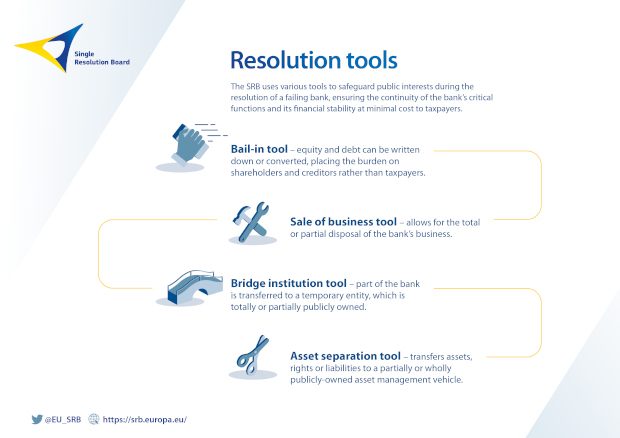SRB resolution tools safeguard public interest, powered by XBRL

Did you know that the EU’s Single Resolution Board (SRB) has four key resolution tools it can use if a bank is failing? These aim to maintain banks’ critical functions and financial stability at minimal cost to taxpayers. Established in response to the 2007–2008 financial crisis, these measures are designed to ensure that risk accrues to investors and to minimise or avoid bail-outs from the public purse.
If, like us, you’ve been scrolling away on social media recently, this SRB infographic may already have caught your eye, helpfully laying out the resolution tools. The bail-in tool, for example, allows equity and debt to be written down or converted. Other possible options are the total or partial sale of business, transfer of part of the bank to a bridge institution, and asset separation.
We’re always interested to see news from the SRB, which must collect substantial volumes of data from banks via National Resolution Authorities (NRAs) in order to effectively draw up and implement resolution plans. In 2020, it introduced mandatory, exclusive XBRL filing for the first time, improving data quality and comparability. This year’s reporting process will incorporate lessons learnt and feedback from NRAs and industry on limiting their reporting burden while meeting resolution planning needs. There is also a new taxonomy extension with minor alterations for 2021, with sample XBRL instances published alongside.
Read more on the resolution tools here, or find out about SRB’s 2021 reporting requirements and taxonomy here.





